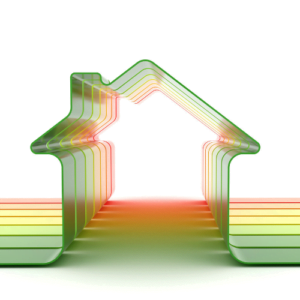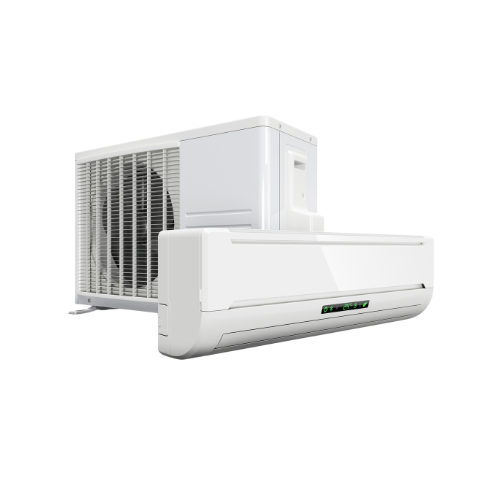How Do Ductless Air Conditioners Work? (mini-split air conditioners ~ energy efficiency ~ individual room control)

1. The Components of a Ductless Air Conditioner
A ductless air conditioner consists of two main components: an outdoor unit and one or more indoor units. The outdoor unit houses the compressor, condenser, and fan, while the indoor units are mounted on the wall or ceiling of the rooms being cooled. The outdoor and indoor units are connected by a conduit that contains the refrigerant lines, power cables, and drainage pipe.
(mini-split air conditioners ~ energy efficiency ~ individual room control)
2. Cooling Process
The cooling process of a ductless air conditioner begins with the outdoor unit. The compressor compresses the refrigerant, raising its temperature and pressure. The hot refrigerant then flows to the condenser, where it releases heat and condenses into a liquid form. The liquid refrigerant is then pushed through the refrigerant lines to the indoor unit.
Inside the indoor unit, the liquid refrigerant passes through an expansion valve, which causes it to evaporate and absorb heat from the room. The now-cooled refrigerant returns to the outdoor unit through the refrigerant lines, and the process repeats.
3. Individual Room Control
One of the key advantages of ductless air conditioners is the ability to control the temperature in each individual room. Each indoor unit has its own thermostat, allowing occupants to set their preferred temperature for that specific area. This zoning capability not only provides personalized comfort but also helps to save energy by avoiding the need to cool unoccupied rooms.
4. No Ductwork Required
Traditional central air conditioning systems rely on ductwork to distribute cool air throughout a building. Ductless air conditioners eliminate the need for ductwork, making them an ideal solution for homes without existing ducts or for room additions. The absence of ducts also reduces the energy loss that can occur in ductwork, resulting in greater energy efficiency.
5. Energy Efficiency

6. Easy Installation
Installing a ductless air conditioner is relatively straightforward compared to traditional central air conditioning systems. The absence of ductwork means less invasive installation, with only a small hole required to connect the indoor and outdoor units. This makes ductless systems a popular choice for retrofitting older homes or for adding cooling to specific areas without major renovations.
7. Quiet Operation
Ductless air conditioners are designed to operate quietly, providing a peaceful indoor environment. The outdoor unit, which contains the compressor and fan, is located outside the building, minimizing noise inside. The indoor units also feature advanced technology to reduce noise levels, ensuring a comfortable and quiet cooling experience.
Ductless, mini split-system air-conditioners (mini -splits) have numerous potential applications in residential, commercial, and institutional buildings. The most common applications are in multifamily housing or as retrofit add-ons to houses with “non-ducted” heating systems, such as hydronic (hot water heat), radiant panels, and space heaters (wood, kerosene, propane). They can also be a good choice for room additions and small apartments, where extending or installing distribution ductwork for a central air-conditioner is not feasible. Check out our Energy Saver 101 infographic on home cooling to learn how ductless, mini-split air conditioners stack up against other cooling systems.
Like central systems, mini-splits have two main components: an outdoor compressor/condenser, and an indoor air-handling unit. A conduit, which houses the power cable, refrigerant tubing, suction tubing, and a condensate drain, links the outdoor and indoor units. (mini-split air conditioners ~ energy efficiency ~ individual room control)
Advantages (mini-split air conditioners ~ energy efficiency ~ individual room control)
The main advantages of mini-splits are their small size and flexibility for zoning and cooling individual rooms. Many models can have as many as four indoor air handling units (for four zones or rooms) connected to one outdoor unit. The number depends on how much cooling is required for the building or each zone. This can be affected by how well the building is insulated and air sealed. Each of the zones will have its own thermostat, so you only need to condition that space when it is occupied, saving energy and money.
Ductless mini-split systems are also often easier to install than other types of air conditioning systems. For example, the hook-up between the outdoor and indoor units generally requires only a three-inch (~8 centimeter [cm]) hole through a wall for the conduit. Also, most manufacturers of this type of system can provide a variety of lengths of connecting conduits. So, if necessary, you can locate the outdoor unit as far away as 50 feet (~15 meters [m]) from the indoor evaporator. This makes it possible to cool rooms on the front side of a building house with the compressor in a more advantageous or inconspicuous place on the outside of the building.
Since mini-splits have no ducts, they avoid the energy losses associated with ductwork of central forced air systems. Duct losses can account for more than 30% of energy consumption for air conditioning, especially if the ducts are in an unconditioned space such as an attic.
Compared with other add-on systems, mini-splits offer more flexibility in interior design options. The indoor air handlers can be suspended from a ceiling, mounted flush into a drop ceiling, or hung on a wall. Floor-standing models are also available. Most indoor units have profiles of about seven inches (~18 cm) deep and usually come with sleek, high-tech-looking jackets. Many also offer a remote control to make it easier to turn the system on and off when it’s positioned high on a wall or suspended from a ceiling. (mini-split air conditioners ~ energy efficiency ~ individual room control)
Conclusion
Ductless air conditioners offer a range of benefits, from energy efficiency and individual room control to easy installation and quiet operation. By understanding how these systems work, homeowners can make informed decisions about their cooling needs and choose the best option for their homes. Whether for new construction, room additions, or retrofitting, ductless air conditioners provide a flexible and efficient cooling solution. (mini-split air conditioners ~ energy efficiency ~ individual room control)

Ductless heating and AC Services










